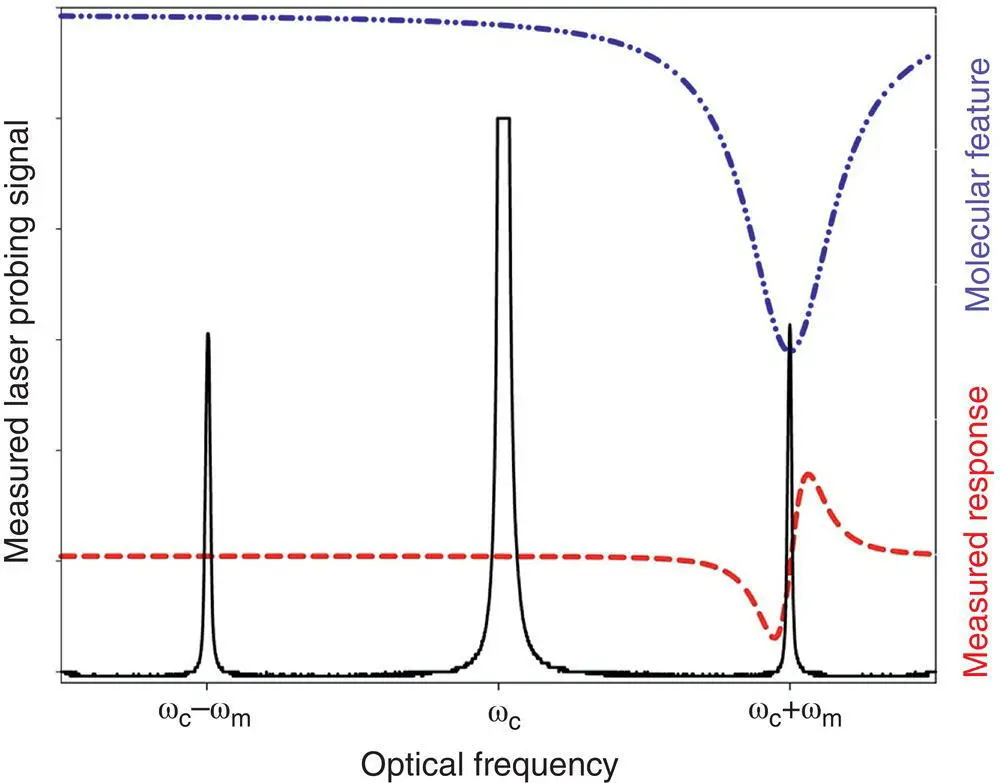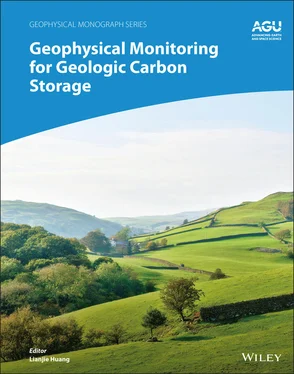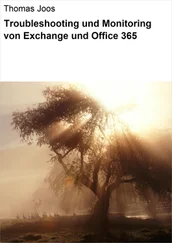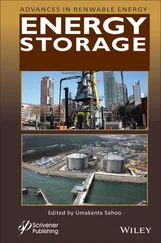Geophysical Monitoring for Geologic Carbon Storage
Здесь есть возможность читать онлайн «Geophysical Monitoring for Geologic Carbon Storage» — ознакомительный отрывок электронной книги совершенно бесплатно, а после прочтения отрывка купить полную версию. В некоторых случаях можно слушать аудио, скачать через торрент в формате fb2 и присутствует краткое содержание. Жанр: unrecognised, на английском языке. Описание произведения, (предисловие) а так же отзывы посетителей доступны на портале библиотеки ЛибКат.
- Название:Geophysical Monitoring for Geologic Carbon Storage
- Автор:
- Жанр:
- Год:неизвестен
- ISBN:нет данных
- Рейтинг книги:4 / 5. Голосов: 1
-
Избранное:Добавить в избранное
- Отзывы:
-
Ваша оценка:
- 80
- 1
- 2
- 3
- 4
- 5
Geophysical Monitoring for Geologic Carbon Storage: краткое содержание, описание и аннотация
Предлагаем к чтению аннотацию, описание, краткое содержание или предисловие (зависит от того, что написал сам автор книги «Geophysical Monitoring for Geologic Carbon Storage»). Если вы не нашли необходимую информацию о книге — напишите в комментариях, мы постараемся отыскать её.
Geophysical Monitoring for Geologic Carbon Storage
Volume highlights include: Geophysical Monitoring for Geologic Carbon Storage
The American Geophysical Union promotes discovery in Earth and space science for the benefit of humanity. Its publications disseminate scientific knowledge and provide resources for researchers, students, and professionals.
Geophysical Monitoring for Geologic Carbon Storage — читать онлайн ознакомительный отрывок
Ниже представлен текст книги, разбитый по страницам. Система сохранения места последней прочитанной страницы, позволяет с удобством читать онлайн бесплатно книгу «Geophysical Monitoring for Geologic Carbon Storage», без необходимости каждый раз заново искать на чём Вы остановились. Поставьте закладку, и сможете в любой момент перейти на страницу, на которой закончили чтение.
Интервал:
Закладка:
where e is the extinction coefficient, c is the concentration, l is the pathlength, and I/I ois the change in light intensity.
The Beer‐Lambert law shows that the change in intensity is proportional to the path length of the light source and the extinction coefficient. The sensitivity of the instrument can be improved by the selection of the light source now that new quantum cascade lasers that operate in the midinfrared spectral region (MIR) are increasingly available. The tunable diode lasers that operate in the near‐infrared are very reliable light sources, but the CO 2extinction coefficient is significantly lower than the optical transitions in the MIR. Finally, the fundamental sensitivity of absorption spectroscopy depends on the optical path length. Consequently, instruments that are capable of very long path lengths are more sensitive at any given laser wavelength. One can increase the path length by collecting the sample within a multipass optical cell such as a Herriott cell or a White cell.
Unfortunately, the interpretation of the simple absorption results can be compromised by the diurnal changes in CO 2flux. The CO 2concentration will diurnally change by 20% –50% (depending upon location and season) and any method that depends strictly on the CO 2flux will be trying to distinguish changes in CO 2concentration due to seepage to the surface from diurnal changes. This fundamentally limits absorption techniques to relatively large changes in flux due to seepage.
Cavity Ringdown Spectroscopy
CRS is an experimental method that is designed to significantly improve sensitivity by greatly increasing path length within a compact instrument (Zalicki & Zare, 1995; Lindenmaier et al., 2014). CRS involves directing a laser or monochromatic light source into a highly reflective cavity containing the gaseous sample. The cavity consists of two mirrors that reflect the light through the sample. One of the mirrors is designed to produce maximum reflectively while the second mirror is designed to leak a very small amount of light, ~99.99% reflective, 0.01% transmission. The transmitted light is recorded with a detector as a function of time. As time increases, the number of times the light passes through the sample increases, more of the light is absorbed, and the amount of light that escapes the cavity decreases. This configuration fundamentally produces a very long, ~10–100 km path length and the concentration is determined by Beer‐Lambert law.
The increase in sensitivity achieved from the very long CRS path length also enables the detection of the minor 13CO 2stable isotope. As discussed in the introduction, one can distinguish the sequestered CO 2from natural emissions by shifts in the stable isotope ratio from natural background levels that are insensitive to the diurnal variations.
Finally, CRS is fundamentally limited to in situ analysis and standoff or remote analysis is impossible. The technique requires the precise alignment of the mirrors to achieve the required sensitivity. Some have proposed using a remotely placed CRS instrument and using meteorological analysis to track the source of the sample. While this can be accomplished, this configuration generally eliminates the capability of directly probing the surface leak locations without moving the instrument.
Frequency Modulated Spectroscopy
FMS is an ultrasensitive variation of absorption spectroscopy that has been developed to measure stable isotope ratios of CO 2(Fessenden et al., 2010). FMS instruments capable of stable isotope field measurements for carbon sequestration (Fessenden et al., 2010) as well as measuring the carbon isotopes in CO 2and CH 4on Mars (Webster & Mahaffy, 2011). Most FMS applications are accomplished in an in situ configuration with a multipass cell (Webster & Mahaffy, 2011). However, FMS is also capable of operating in a remote configuration as discussed below. The technique involves directing a laser through a modulator that produce sidebands that are shifted from the laser wavelength by kilohertz to gigahertz frequencies as depicted in Figure 3.2. The entire system can be tuned, the laser wavelength and the frequency shift, so that one sideband interacts with an absorption feature while the carrier laser and the other sideband are unaltered. The detector senses the changes in the sideband and the derivative shaped function. As the CO 2concentration increases, the peak‐to‐peak amplitude of the recorded response increases. This allows for very small changes in concentration to be measured, effectively increasing the signal to noise ratio where a large contrast in harmonic amplitude change can be seen on a dark background. This is in contrast to absorption spectroscopy where one is recording a relatively small change relative to a bright background. Consequently, one can theoretically achieve quantum noise levels, and it is conservatively a factor of 100 to 1,000 times more sensitive than absorption spectroscopy under identical conditions. Finally, this increased sensitivity also enables the detection of stable isotopes such as 13CO 2.

Figure 3.2 A FMS instrument produces sidebands (ω c± ω m) shifted from the carrier (laser) wavelength (ωc) (based on Bjorklund & Levenson, 1983).
3.2.2. Standoff or Remote Methods
The number of remote sensing possibilities is limited compared with the in situ methods, and we are not aware of any commercially available instruments. Various LIght Detection And Ranging (LIDAR) methods have been developed and demonstrated including Differential Absorption LIDAR (DIAL). The FMS technique has been developed and demonstrated in several configurations including LIDAR.
LIDAR fundamentally involves directing a pulsed nanosecond laser through the gaseous sample in the atmosphere (Johnson et al., 2013). Some of this laser light is scattered off dust and aerosols and some of that scattered laser light is directed back toward a collection telescope and recorded. The amount of scattered light is very weak and requires very sensitive detectors. The scattered laser intensity is recorded as a function of time and one can convert the signal as a function of time to distance based on the speed of light. The intensity of scattered light is also proportional to the concentration of species that absorbed the light over the path length of the light. With most laser powers, one can achieve LIDAR detection at hundreds to thousands of meters. However, the range resolution required to identify the location of a leak requires short and accurate temporal resolution and is generally limited by the detector sensitivity.
DIAL is typically used to calculate the CO 2concentration from a LIDAR experiment. DIAL involves collecting a LIDAR spectrum where the laser is tuned to a CO 2absorption feature to determine the “I” term in the Beer‐Lambert law ( equation 3.1). The same laser (or a second laser) is tuned to a wavelength off of the absorption feature to determine the baseline intensity, I o. The CO 2concentration is proportional to the difference between these two signals.
At Los Alamos National Laboratory (LANL), FMS has been developed into both a “remote” and LIDAR instrument that was designed to measure both the major and minor carbon isotopes. Here, we define remote as an experiment that involves directing the laser to a hard target such as a wall, a geologic surface, or a mirror/corner cube. The intensity of light scattered or reflected off a hard surface is significantly brighter than the light scattered off dust and aerosols used to detect a LIDAR instrument. The same modulated laser discussed in the in situ instrument above is directed through the sample in the field and the signal returned from the hard target is recorded rather than recording the range resolved signal. While this method produces the most sensitive record of CO 2concentration over the long path length, this technique is limited to locations where a hard target is available.
Читать дальшеИнтервал:
Закладка:
Похожие книги на «Geophysical Monitoring for Geologic Carbon Storage»
Представляем Вашему вниманию похожие книги на «Geophysical Monitoring for Geologic Carbon Storage» списком для выбора. Мы отобрали схожую по названию и смыслу литературу в надежде предоставить читателям больше вариантов отыскать новые, интересные, ещё непрочитанные произведения.
Обсуждение, отзывы о книге «Geophysical Monitoring for Geologic Carbon Storage» и просто собственные мнения читателей. Оставьте ваши комментарии, напишите, что Вы думаете о произведении, его смысле или главных героях. Укажите что конкретно понравилось, а что нет, и почему Вы так считаете.












